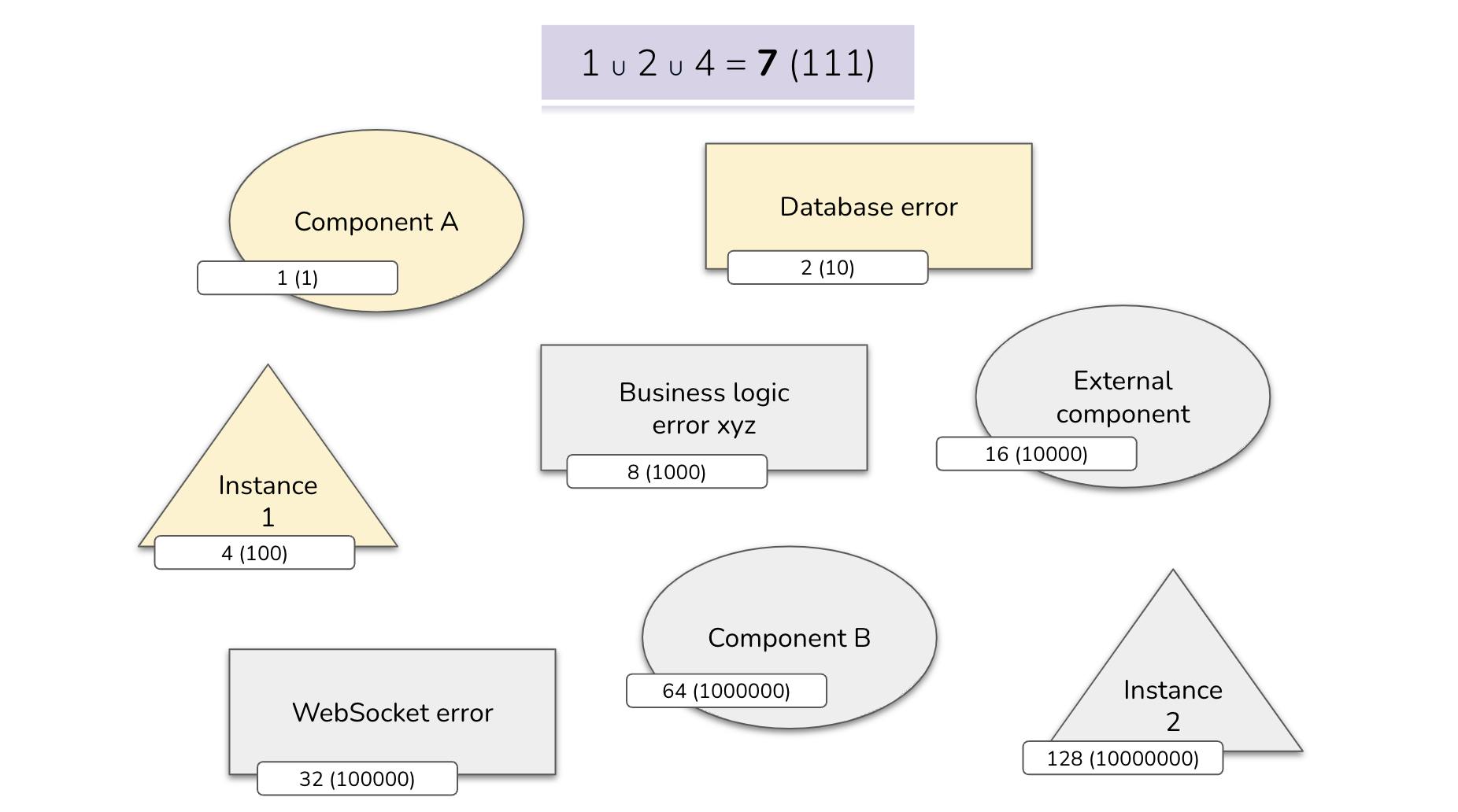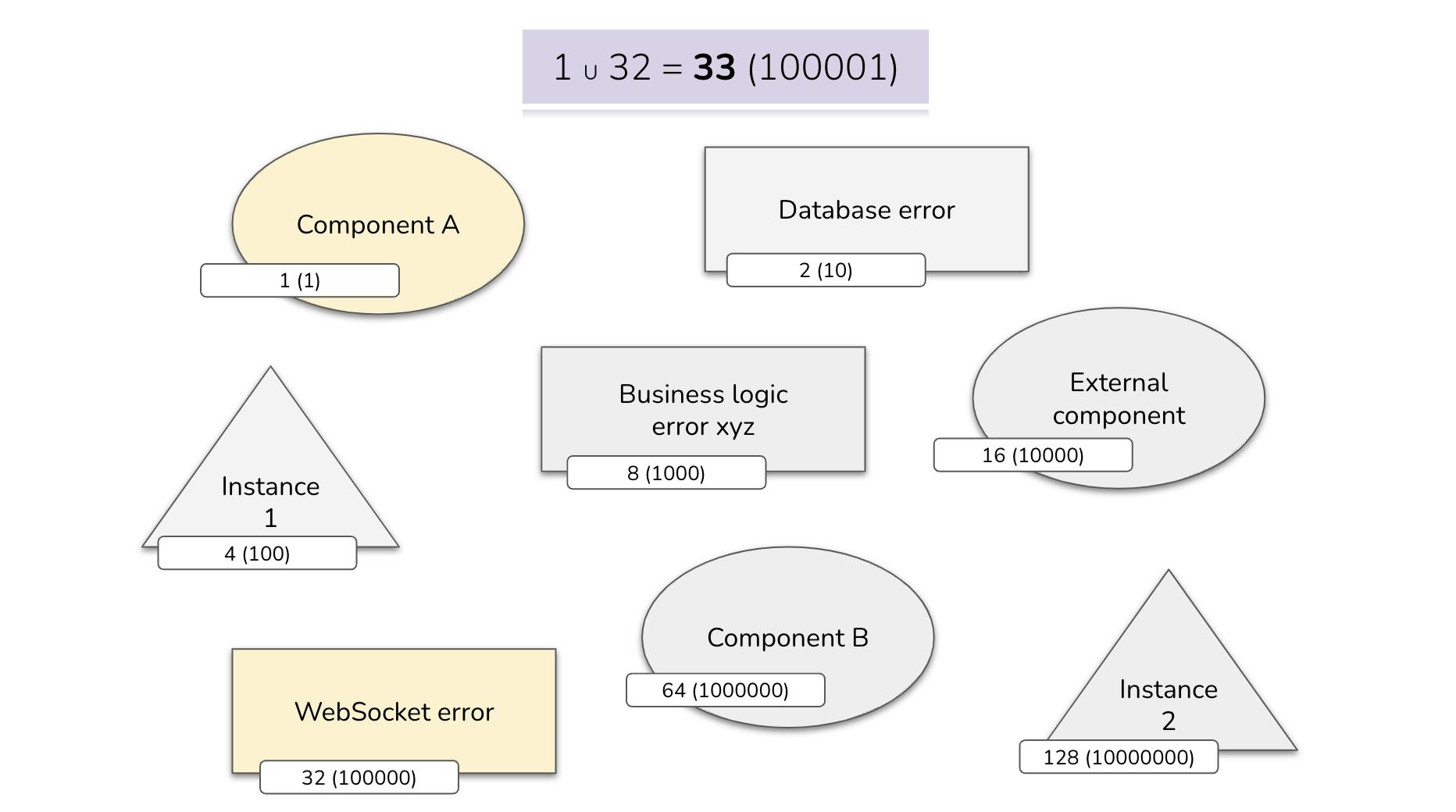Contextual Yet Non-Descriptive Errors
Proposal for Automatically Generated Error Codes
Developers must carefully balance the amount of information provided in error messages displayed to end-users. Disclosing too much information through these errors can lead to security breaches. On the other hand, using generic error messages can make it more challenging for support teams to identify and resolve the underlying issues.
A feasible solution is creating public-facing error messages that map internal (potentially confidential) error objects, such as iOS update and restore error codes. These error codes are not very descriptive (or not descriptive at all), but they offer context to the engineers who can map them with their actual meaning—in terms of actual implementation. This manual and static mapping requires developers to maintain it when new categories or combinations of errors arise, which can be prone to errors and incompleteness.
To avoid the need for manual error code mapping, we propose a dynamic mapping that generates unique and deterministic error codes on the fly, encapsulating the context of an error in a single number (an error code).
These dynamic error codes are contextual (they offer clues about the context of the errors), yet non-descriptive (they do not leak information about the context of the errors).

Identification of “Error-Items”
To begin with, we define a set of miscellaneous items—“error-items”—that can help identify the root cause of bugs, such as components, instances of the application (when the application knows their characteristics by the time an error object is generated), categories of errors, and so on. The developers arbitrarily define these error-items based on their perceived usefulness in debugging a specific issue. The purpose of these items is to quickly pinpoint the root cause of a bug; in other words, to characterize the context of an error.
Let’s use a toy example to illustrate this idea.
A small application consists of two main components (or packages, or microservices, etc.), which can be instantiated several times. Additionally, we identify three categories of errors: WebSocket errors, some business logic errors, and database errors.
From the point of view of the definition of error details, this application contains a mixed bag of 8 error-items. We arbitrarily identified them as useful pieces of information that, when combined, can provide a relevant context to debug future bugs. We do not need to anticipate all combinations of items (or, to put it in another way, all possible error contexts): this approach does it for us.

Then, to represent each item in the error code, we start by assigning a unique number—a power of two—to each of them. These numbers are their identifiers.
Using binary manipulation, we create a one-hot vector for each item by left-shifting one bit by the position of the item in the list of error-items defined for the application (1 << index). The first item will be represented as b1 (1), the second as b10 (2), the third as b100 (4), and so on.
type errorItem int64
const (
ComponentA errorItem = iota
// ... list of error-items ...
)
// ...
errorItems := make(map[errorItem]int64)
for i, item := range items {
errorItems[item] = 1 << i
}
These identifiers can alternatively be generated arithmetically:
$$id_{i} = 2^{i}$$
The error-items are now labelled.

This auto-generated mapping between error-items and their identifiers can be easily extended whenever a new feature is added to the application or when it becomes apparent that a new item needs to be defined. This can be done just by adding the new item to the loop that assigns identifiers, ensuring that all new items are properly represented in the error code.
It should be noted that, for the system to be future-proof, obsolete items have to be disabled—for instance by using a special enum—instead of removed, and identifiers of new items have to be greater than previous ones.
Encoding the Error Context

When an error occurs in the application, its error code is computed through a bitwise OR operation on all selected error-items (basically, the items that compose the context of the error). This operation generates a unique number representing the union of items—as they are unique powers of two.
Let’s consider an example.
Suppose we have two items having identifiers 2 and 16:
n := 2 | 16
fmt.Printf("%d <=> %b (%b | %b)\n", n, n, 2, 16)
// 18 <=> 10010 (10 | 10000)
The result is a unique number (18) representing the union of the two singleton sets.
Here are additional illustrations of this idea, based on the toy example.
A) A database error returned by component A that occurred in the first instance of the application ⇒ Component A ∪ Instance 1 ∪ Database Error ⇒ 7

B) A WebSocket error returned by component A ⇒ Component A ∪ WebSocket Error ⇒ 33

C) An error returned by an external component that occurred in component B of the second instance of the application ⇒ Component B ∪ External component ∪ Instance 2 ⇒ 208

This operation is trivial: it simply corresponds to adding the identifiers of the error-items. What makes this process useful is that this addition can be reversed to extract its terms. In other words, the contextual information transformed by the addition can be reconstructed ex-post.
Decoding the Error Codes

To decode the error code, it suffices to perform the reverse operation (permitted by the fact that the identifiers are unique powers of two) by applying the AND operation between each identifier and the error code. If the operation results in the identifier itself—that is: errorCode & identifier == identifier—, this item belongs to the context of the error.
errorCode := 18
for _, identifier := range []int{1, 2, 4, 8, 16, 32, 64} {
belongsToErrorContext := errorCode & identifier == identifier
fmt.Printf("%d: %v\n", identifier, belongsToErrorContext)
// 1: false
// 2: true ✔
// 4: false
// 8: false
// 16: true ✔
// 32: false
// 64: false
}
Because the identifiers are automatically mapped with the error-items, the reconstituted terms of the addition/OR operation are translated into a meaningful context.
Discussion
So, what’s the point of these contextual yet non-descriptive errors?
These error codes lack helpful information for end-users, making it challenging for them to resolve the issue by themselves (when applicable). A user-friendly, customized error message is always preferable.
Furthermore, when investigating a bug, with this approach engineers need to use a decoder that perfectly matches the encoder’s representation of error-items.
We think that these errors can still be helpful for the following reasons.
Complementary debugging device. This approach provides an additional indicator that complements well-thought-out error messages (it does not aim at replacing them), making it easier for developers to identify and resolve issues without leaking details about the internal implementation—just compare
Username cannot be createdv.Username cannot be created (143). It offers a clue about the context of an error without having the developers examine multiple variables and logs while making it harder for attackers to reverse-engineer sensitive information.Simplified error management. Thanks to this algorithmic mapping, developers do not need to worry about managing error mapping, as this approach takes care of it automatically. This leads to increased flexibility in handling new combinations of existing items. For instance, imagine that the
Database Erroris only used in combination withComponent A(because this component is the only one using a database). Later, this application is updated so thatComponent Bnow uses a database. No need for the developers to define a new error-item. It suffices to automatically generate a new error code based on theComponent B ∪ Database Errorunion. Programmatically, the developer just has to call the function that generates the code with the enums corresponding to component B and the database error type. In this respect, while the error-items have to be defined, the mapping, corresponding to combinations of items, is dynamic.Simplified logging. When errors are propagated from one service to another, this approach simplifies logs by only transmitting the error code and potentially a customized error message, rather than duplicating the entire error object. In practice, in the context of a microservices architecture, people reviewing the logs of a service that propagates the error code can quickly identify the relevant log thanks to the contextual information encoded by the error code.
Easy to implement. Last but not least, the encoder and decoder are based on simple, stateless, and easy-to-understand operations, further simplifying the development process.
Opinions expressed are solely my own and do not express the views or opinions of my employer.
